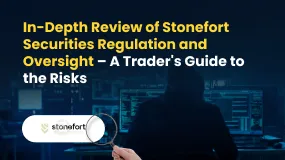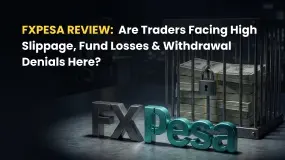简体中文
繁體中文
English
Pусский
日本語
ภาษาไทย
Tiếng Việt
Bahasa Indonesia
Español
हिन्दी
Filippiiniläinen
Français
Deutsch
Português
Türkçe
한국어
العربية
Analysis: South Korea’s high-speed 5G mobile revolution gives way to evolution
Abstract:South Korea was the first country to launch a fifth-generation mobile network in 2019, heralding a warp-speed technological transformation to self-driving cars and smart cities.

Three years on, the giddy promises are unfulfilled.
Some 45% of the countrys people are now on 5G, one of the highest rates globally, after some $20 billion in spending on network upgrades that have boosted connection speeds five-fold. But telecommunications companies have not been willing to invest in the fancier technology that would ramp speeds by 20 times over 4G technology.
That is because the demand is not there yet. App makers have not brought to mass market services like autonomous driving that would require more firepower. Customers can watch Netflix and surf the net well enough with existing 5G technology.
Telcos have adapted by diversifying. To make the quantum leap to the highest-speed 5G will require the roll-out of essential services that need such fast connections.
“When households begin to have robots at their homes, for instance, telcos would then start ramping up infrastructure investments, so the highest-speed 5G will be partially available around 2025,” said Kim Hyun-yong, an analyst at Hyundai Motor Securities.
The lesson for other countries racing toward 5G may be: curb your enthusiasm. The new technology holds great promise, but for now there will still be as much evolution as revolution in the high-speed internet future.
In April 2019, South Koreas three mobile carriers – with a PR campaign featuring K-pop stars and an Olympic gold medallist – as well as Verizon Communications of the United States – rushed their commercial 5G launches ahead of schedule, all keen to claim first spot in the high-profile wireless technology.
Asias fourth-biggest economy has remained the 5G pioneer, but the hype had begun to fade even before COVID-19 slammed demand for 5G devices. Companies have baulked at investing the estimated $370 billion needed to set up the fastest 5G, and revenue growth has stalled.
“Rolling out 5G that is 20 times faster is nearly impossible, even in Seoul,” said Ku Hyun-mo, CEO of South Koreas top telecoms operator, KT Corp.
“Establishing nationwide coverage just can‘t be done,” Ku told Reuters. The fastest version millimetre wave (mmWave) spectrum “travels straight and it can’t go around obstacles. It cant deliver the same speed once it travels a few hundred metres.”
The ultra-shortwave mmWave would require 15 to 20 base stations per square kilometre (40-50 per square mile), compared with just two to five for 4G, according to a McKinsey report.
NO KILLER APP
South Korean telcos have built around 215,000 5G base stations, but only 2% of them can handle mmWave. Other countries that have introduced 5G, such as the United States and China, also largely rely on the slower mid-band spectrum.
As of March, South Korea had 22.9 million 5G subscribers, just under half the number of its 4G users. By contrast, when 4G celebrated its third birthday, its users had more than doubled those of its predecessor.
“When 4G was first rolled out in 2011, data demand exploded to watch YouTube and Netflix, and users aggressively switched to 4G,” said analyst Kim. Now, though, “telcos currently lack a killer service that can generate heavier data demand” that would justify paying up for 5G he said.
In the first two to three years of 4G, carriers‘ average revenue per user (ARPU) climbed 5% to 12% annually. By contrast, KT’s ARPU rose 3.7% in the first quarter from a year earlier, while that of SK Telecom Co edged up 0.6% and third-ranked LG Uplus Corp saw a 4.2 decline.
“If telcos stick with the current connectivity business, they will plateau,” said KTs Ku.
Mobile carriers are increasingly turning their eyes to new businesses. KT is developing artificial intelligence to power call centres, hoping that business will double this year, while SK Telecom has seen a jump in revenues for cloud services and data centres.
Diversification is paying off with investors so far. SK Telecom and KT shares have risen some 26% since 5G rolled out, beating the broader markets 18% rise even as ARPU growth slowed.
“From 3G to 4G, data demand increased exponentially. But at the moment, data demand is growing linearly,” said Hyundais Kim. “Mid-band 5G would facilitate the popularisation of 5G and serve as a bridge to the next step.”

Disclaimer:
The views in this article only represent the author's personal views, and do not constitute investment advice on this platform. This platform does not guarantee the accuracy, completeness and timeliness of the information in the article, and will not be liable for any loss caused by the use of or reliance on the information in the article.
Read more

In-Depth Uniglobe Markets Commission Fees and Spreads Analysis – What Traders Should Really Know
For experienced traders, the cost of execution is a critical factor in broker selection. Low spreads, fair commissions, and transparent pricing can be the difference between a profitable and a losing strategy over the long term. This has led many to scrutinize the offerings of brokers like Uniglobe Markets, which presents a tiered account structure promising competitive conditions. However, a professional evaluation demands more than a surface-level look at marketing claims. It requires a deep, data-driven analysis of the real trading costs, set against the backdrop of the broker's operational integrity and safety. This comprehensive Uniglobe Markets commission fees and spreads analysis will deconstruct the broker's pricing model, examining its account types, typical spreads, commission policies, and potential ancillary costs. Using data primarily sourced from the global broker inquiry platform WikiFX, we will provide a clear-eyed view of the Uniglobe Markets spreads commissions prici

In-Depth Review of Stonefort Securities Regulation and Oversight – A Trader's Guide to the Risks
For experienced traders, the process of selecting a new broker transcends a simple comparison of spreads and leverage. It is a meticulous due diligence exercise where the integrity of the broker's regulatory framework is paramount. Stonefort Securities, a relatively new entrant in the crowded brokerage space, presents a complex and often contradictory profile. On one hand, it boasts a modern MT5 platform and a stream of positive user testimonials. On the other hand, it is shadowed by severe regulatory warnings that question the very foundation of its operations. This in-depth review focuses on the core issue for any long-term trader: Stonefort Securities regulation and oversight. We will dissect the broker's corporate structure, scrutinize its licensing claims, and analyze what the data implies for trader protection and fund security. For traders evaluating whether Stonefort Securities is a trustworthy partner, understanding these details is not just important—it is essential.

FXPesa Review: Are Traders Facing High Slippage, Fund Losses & Withdrawal Denials?
Do FXPesa support officials fail to pick up your calls when you raise fund withdrawal requests with the broker? But are these officials always open to you regarding fund deposits? Do you frequently spot slippage and stop-loss order execution errors on the FXPesa login? These issues are increasingly becoming common with this forex broker. Consequently, many traders have expressed their dissatisfaction with the broker online. In this FXPesa Review article, we have shared some of these complaints. Take a look!

Trive Investigation: High Score, Hidden Risk - The Profit Paradox
A disturbing pattern has emerged regarding the broker Trive. Despite holding a high WikiFX score (7.91) and valid licenses in South Africa and Australia, recent investor reports suggest a significant disconnect between the platform's reputation and its treatment of profitable clients. While the regulatory paperwork appears in order, our data indicates that traders are facing sudden account freezes and accusations of "trading abuse" precisely when they attempt to withdraw profits. This report investigates why a seemingly "safe" broker is generating high-risk complaints.
WikiFX Broker
Latest News
WikiFX's New Evaluation of ATM Capital LTD: Does its License Protect the Arab Investor?
How a Fake Moomoo Ad Led to the “New Dream Voyage 5” Scam
Is Axi Legit? A Data-Driven Analysis of Its Regulatory Standing and Trader Feedback
FXPesa Review: Are Traders Facing High Slippage, Fund Losses & Withdrawal Denials?
Trive Investigation: High Score, Hidden Risk - The Profit Paradox
In-Depth Uniglobe Markets Commission Fees and Spreads Analysis – What Traders Should Really Know
Bessent believes there won't be a recession in 2026 but says some sectors are challenged
Is GGCC Legit? A Data-Driven Analysis for Experienced Traders
Young Singaporean Trader Grew USD 52 into a USD 107,700 Portfolio
In-Depth Review of INZO Trading Conditions and Product Offering – A Data-Driven Analysis
Currency Calculator



